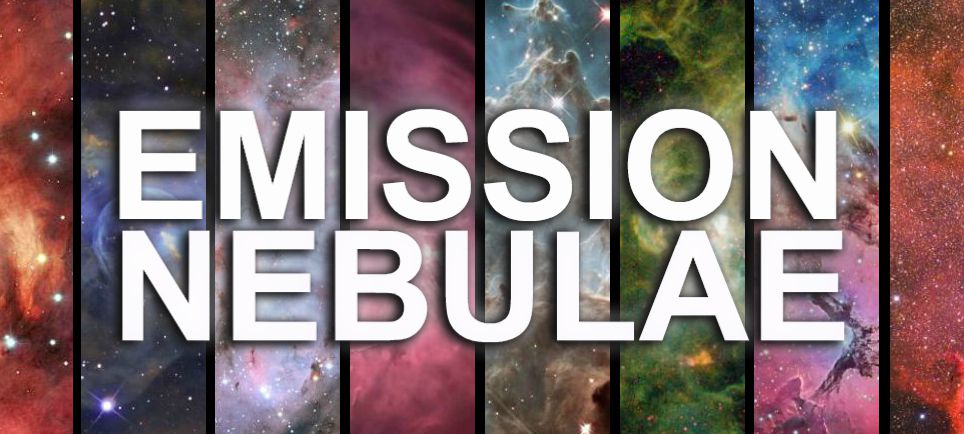

As we continue to break new ground in the field of cosmology, the importance of carefully categorizing the objects we see comes into focus. Part of this stems from the fact that, increasingly, we find that many objects appear to be the same on a macroscopic level, but are vastly different internally. In other instances, one phenomenon can manifest in numerous strange ways.
Our system is far from perfect, as you will soon learn, but to start.. the common thread in this series is the word “nebula,” which—at its most rudimentary point—refers to a large cloud of gas—though all are not created equal. In fact, no two are ever exactly alike. As such, they are placed in several different categories based on their appearance and characteristics. Perhaps most prevalent are emission nebulae.
Emission nebulae, more specifically, are clouds of ionized gas. Mostly mostly comprised of hydrogen, these clouds also harbor noticeable quantities of helium, oxygen, and nitrogen (among others). These nebulae get their ionization from hot young stars which release enough energy to ionize small portions of the surrounding gas. In many cases, an entire cluster of young, energetic stars often act as the driving force behind ionization.
When it comes down to it, being classified as an emission nebula has more to do with the way a nebula is illuminated than the manner in which it formed. As an example, the Veil Nebula (a supernova remnant), the Ring Nebula (a planetary nebula), and the Orion Nebula (a diffuse nebula)—all nebulae that clearly belong to another class—qualify as emission nebulae (or, at least, parts of them do).

The Lagoon Nebula (below)—a star forming region within the constellation of Sagittarius—is another example. It spans around 110 x 50 light-years across, and, in addition to it being classified as an emission nebula, it is also described as an H II region. You can see the star cluster responsible for ionizing the nebula near its core.

When talking about these nebulae, you’ll hear the term X # region, such as the H II region (pronounced H-2) I mentioned earlier. Basically, these describe specific parts of emission nebulae. H II regions are named for the ionized hydrogen, likewise, you have He II regions (for helium), O III regions (for doubly-oxygen), and many more.
On that note, the hallmark of emission nebulae is their distinctly red color, which is a consequence of having so much hydrogen. Of course, their colors can vary based on how ionized clouds are and what they are comprised of.
See other examples of emission nebulae below:
See other articles in this series:
- Classifications of Objects in Space Part 2: Reflection Nebula
- Classifications of Objects in Space Part 3: Diffuse and Star-forming Nebulae
- Classifications of Objects in Space Part 5: Planetary/Protoplanetary Nebulae, Supernova Remnant